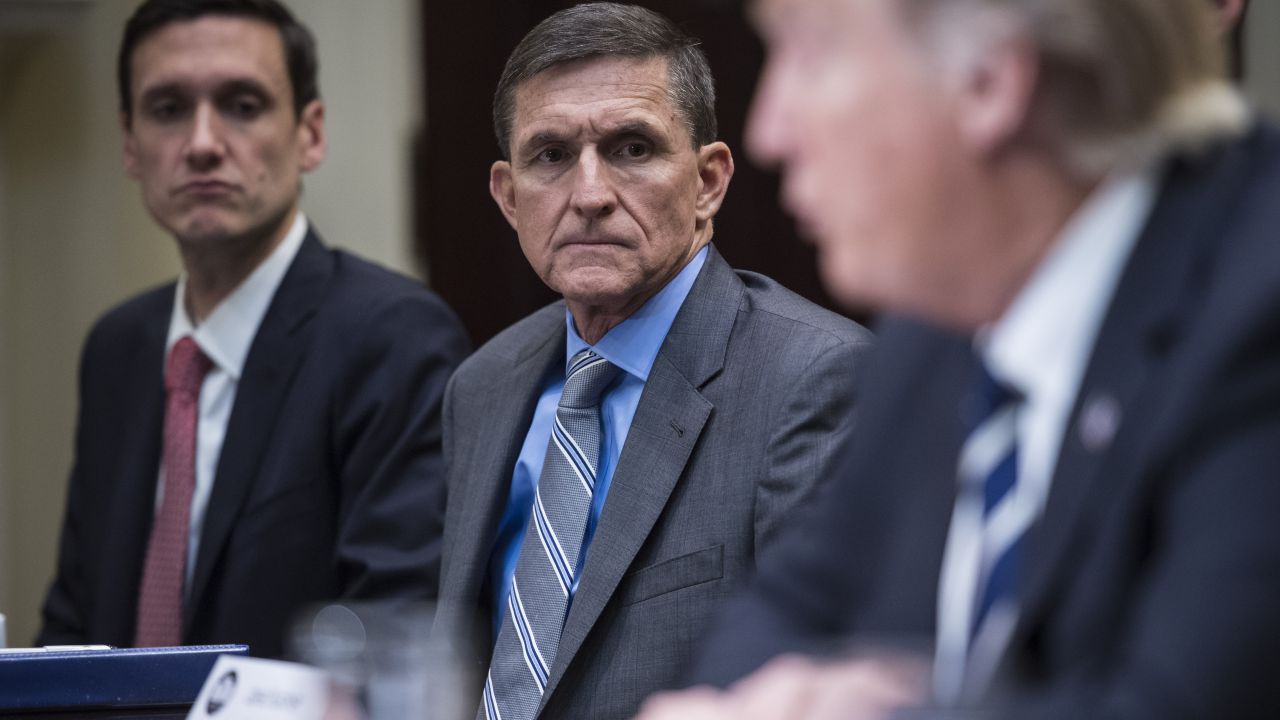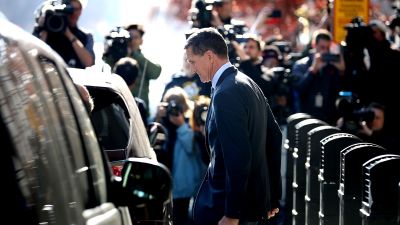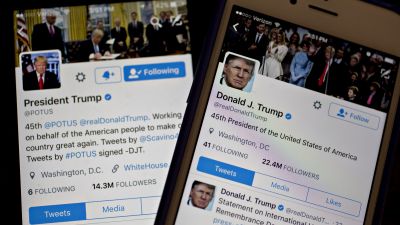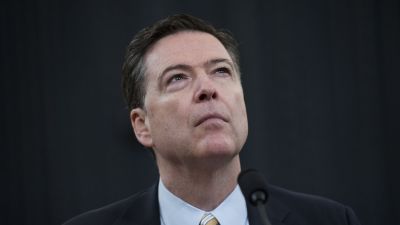
National security adviser Mike Flynn listens to President Trump in the Roosevelt Room of the White House in Washington, DC on Tuesday, Jan. 31, 2017. (Photo by Jabin Botsford/The Washington Post via Getty Images)
The media controversy over who wrote President Trump’s Dec. 2, 2017 tweet shifted attention away from a key point about the tweet itself: It is a double-barreled lie that obscures the facts surrounding a more important story.
Here is the tweet at the center of the storm:
I had to fire General Flynn because he lied to the Vice President and the FBI. He has pled guilty to those lies. It is a shame because his actions during the transition were lawful. There was nothing to hide!
— Donald J. Trump (@realDonaldTrump) Dec. 2, 2017
The Media Controversy
Immediately after it appeared, pundits began debating whether Trump had incriminated himself. Some thought that Trump had admitted to obstructing justice.
Here’s their argument: Trump tweeted that he “had to fire Gen. Flynn because [Flynn] lied” — but not just to Vice President Pence, as Trump and the White House had maintained since February. Trump’s tweet also says that he fired Flynn for lying to the FBI. That means that on Feb. 14, 2017 — the day after Flynn resigned — when Trump asked then-FBI Director James Comey to back off on the bureau’s investigation of Flynn, Trump knew Flynn had lied to the FBI about his late-December 2016 conversations with Russian Ambassador Sergey Kislyak. In that scenario, Trump’s request that Comey “let this go” is an attempt to obstruct justice.
Then on Saturday Trump’s personal lawyer, John Dowd, claimed he authored the tweet. So, Trump defenders argue, because Trump didn’t write it, Trump didn’t incriminate himself. But that’s tenuous. Because Trump did not disavow or delete this “official statement by the president of the United States” — a definition that the Trump administration itself provided — the tweet became what lawyers call an “adoptive admission” that binds Trump. In other words, Dowd has created a nightmare for himself and his client.
But here’s the other thing: The tweet is riddled with lies.
The Lies
The truth is that Trump didn’t fire Flynn for either of the reasons he gave in his tweet. If he had, Flynn would have left his top national security post weeks earlier. Again, John Dowd’s words put his client in a tough spot. Dowd said White House counsel Don McGahn had told Trump in late January that he believed Flynn had probably misled the FBI and lied to Pence about the substance of his calls with Kislyak. But Trump didn’t fire Flynn until The Washington Post broke the story on Feb. 13. The unavoidable inference is that Trump did not fire Flynn because he lied; he fired him because the media discovered the lie and reported it.
The More Important Story
The media focus on Trump’s tweet has obscured the key facts underlying Flynn’s guilty plea, and Trump has no incentive to help the public see those facts clearly.
- In late December 2016, Trump’s national security adviser-designate Mike Flynn — in consultation with a senior official of the Trump transition team later identified as K. T. McFarland — spoke to Russian Ambassador Sergey Kislyak about newly imposed US sanctions for election interference. Flynn’s mission was to persuade Kislyak that the Trump administration would reward Putin for a restrained response, and he succeeded.
- After his phone call with Kislyak, Flynn “spoke with senior members of the presidential transition team about [his] conversations with the Russian ambassador regarding the US sanctions and Russia’s decision not to escalate.” We don’t know if Flynn’s conversations included Vice President-elect Mike Pence, but Pence was chairman of the transition team.
- On Jan. 24, 2017, four days after the inauguration, the FBI interviewed Flynn. He lied, adhering to the White House line that Pence had established: Flynn’s discussion with Kislyak “had nothing whatsoever to do with those sanctions.”
- On Jan. 26, 2017, Acting Attorney General Sally Yates told White House counsel Don McGahn that Flynn had lied to the vice president about his conversation with Kislyak and that US intelligence — and the Russians — considered him a blackmail risk.
- On Jan. 27, Trump invited FBI Director James Comey to dinner in the White House and asked for Comey’s “loyalty.”
- For more than two weeks, Flynn remained in the nation’s most sensitive national security post until The Washington Post broke the story about Yates’ warning to McGahn. Then Trump and the White House said that Flynn was fired because he had lied to Pence about his conversations with Ambassador Kislyak.
- On Feb. 14, 2017 — the day after Flynn’s resignation — Trump told Comey, “I hope you can see your way clear to letting this go, to letting Flynn go. He is a good guy. I hope you can let this go.” Comey took Trump’s request as a directive to terminate the Flynn investigation. Three months later, Trump fired Comey.
- Comey later testified, “It’s my judgment that I was fired because of the Russia investigation. I was fired in some way to change, or the endeavor was to change, the way the Russia investigation was being conducted.”
Properly considered, Trump’s tweet should bring into clear view the enduring theme of the Trump-Russia investigation: When facing questions related to Russia, Team Trump answers with lies — sometimes layers and layers of them.




